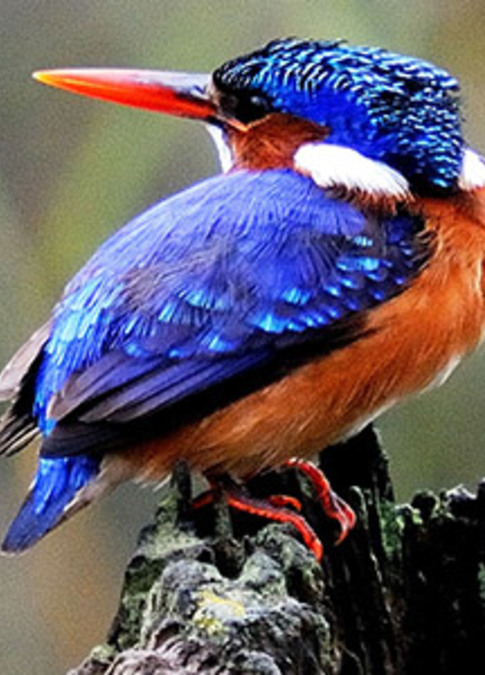Rhinos
We snaked silently through the bush following in the footsteps of our game-ranger. He paused and while un-slinging the rifle from his shoulder, lifted his left hand as a signal for us to stop. What had he seen? After a few moments he turned slowly towards us and by signs reinforced his earlier instruction to remain silent, while at the same time beckoning us to come closer. There, only metres away, was a mother rhino and her very young calf. Both animals were completely oblivious of us. The mother seemed to be deep in contemplation. Her offspring shuffled around in the dust, occasionally nudging its dam. We watched entranced.
Suddenly there was a crash of breaking branches followed by a dull thud. The rhino was instantly alert and turned to face us. The ranger lifted his rifle. Our hearts pounded. Seconds passed, seconds that apparently were infinitely longer than normal. The ranger’s rifle was steady, his cheek cushioned on its butt, his finger on the trigger. Then, with the flick of a ballroom-dancer the bulky animal turned and headed away from us, her calf scrabbling to keep ahead of its mother.
With an audible exhalation the ranger lowered his rifle, and after checking that the two animals were still moving away from us, he turned to face his charges. In moments his face was transformed by a grin that spread from ear to ear, and he began to laugh. He clutched his stomach and hooted with glee. Still shaken we looked to see what had caused this extraordinary outburst. Lying in the dust was one of the younger members of our party. Unbeknownst to us he had climbed a dead tree for a better look. The rotten trunk had unexpectedly given way depositing him in the dust surrounded by a mass of kindling. Having established that nothing other than his self-esteem had been damaged in the fall, the rest of us joined in the ranger’s merriment; a physical release from the previous tension. The discomfited youth remained sitting in the dust, a picture of misery.
The ranger, still beaming, stepped forward and offered the youth a hand, and as he pulled him to his feet said, “Young man, next time you feel like playing Tarzan of the Apes, please wait until there are no rhinos around; especially mothers with calves.”
According to the 19th century hunters the White Rhinoceros - Ceratotherium simum – is a far more placid animal than the smaller Black Rhinoceros – Diceros bicornis. We were fortunate in that the mother and child that we disturbed were White Rhinos. Had they been of the Black variety the outcome might have been very different, for these animals are known to sometimes charge blindly just to ascertain whether or not an object poses any danger.
The White Rhinoceros should really be known as the “Square-lipped,” for the “white” does not refer to its colour, but is a corruption of the term wyd mond - wide mouthed – originally used by the old Boer hunters.
Despite their outward similarity, Black and White Rhinos differ in many ways, but the shape of their mouths is governed by their habits, for the white variety is essentially a grazing animal, whereas the Black Rhino, with its pointed lip, is a browser, eating principally leaves and shoots. Historically White Rhinos were found mainly in Kwazulu/Natal, while Black Rhinos were far more widespread. Dutch commander at the Cape, Jan van Riebeeck, recorded in his diary in 1653 that they were common on the Cape Flats near present-day Cape Town, and even on the slopes of Table Mountain.
Today the greatest threat to both varieties of rhinoceros is poachers. Sadly, not even the Eastern Cape has escaped this scourge, and the numbers of these iconic animals continues to dwindle, so the sight of a calf with its mother is indeed a cause for celebration.








